Jerry Jenkins, 6 Nov 016
Now that the website is up, I am editing woody plant photo-guides and charts. These are almost ready to go to the printers and should be available in early 2017. You can see a photo-guide here, and some of the charts here and here.
The photo-guide will treat about 235 species of woody plants. This isn’t everything in the northern forest—we are still missing some western species—but it is most. As of October 20, I had photographed 226. The leaf season was almost over, and I still had nine to go and perhaps a week to find them.
Finding rare species can’t be done by chance. You have to know exactly where they have been seen, and, ideally, go with someone who has seen them. Fortunately, I knew the right people.
For the southern species there was Glenn Motzkin, here looking for Salix pyrifolia with me along the Oswegatchie River a few years back. He is part of a group of botanists that have been mapping the plants of Franklin County, MA. The group is very good. If it has leaves and is in Franklin County, the chances are pretty good that they can find it.
Anyway, I gave Glenn a list, picked him up on a lovely fall morning, and we went at it.
Our first species was Prunus americana, American plum. It is southern and western species, common on the prairies but rare here. It was cultivated by the settlers, and some of our plants, especially those near houses or along roads, are likely escapes from cultivation. We weren’t proud, and got twigs and some fallen leaves from a roadside near a house. The leaves were typical wild-plum leaves, oval and with a prolonged tip, and had very sharp teeth.
The twigs were also typical plum, with closely spaced, conical buds on stubby, thorn-like shoots.
For comparison, here is Prunus nigra, Canada plum, which the common plum in the northern forest. It has blunter leaf teeth, with glandular tips,
and buds with dark, gray-black scales. These are not big differences but are enough: so far as I know, the species are distinct.
Our next stop was at the mouth of the Miller’s River, to see an alder. It’s pretty place, and I want to go back and get pictures. This trip we had to cover ground, and so I didn’t take the photo gear.
We were looking for Alnus serreulata, smooth alder. It is common in the southern United States, but rare and not always convincing here. Our common alder is Alnus incana, speckled alder. Incana is variable, in the normal birch family way, but typically has leaves with both large wavy teeth and small sharp ones. The female catkins are on hooked branches and point downwards.
When we got to the river, we found one alder, with one leaf left. It was leaning over the river and the other leaves had washed away.
Glenn got the last leaf and some twigs, without washing away himself. The leaf had slightly wavy edges and only small teeth.
The twigs varied. Some had spreading female catkins; some had curved ones. None were as sharply hooked as typical speckled alder.
Even with the little we had, this was certainly close to smooth alder. But whether it was a typical smooth alder, or, for that matter, whether any Massachusetts alders are typical smooth alders, is a harder question. The smooth and speckled alders hybridize extensively, and we are in their zone of contact. We might have some of each, or a variable hybrid population connecting the two parents. If anyone knows, please write. If no one knows, perhaps someone should go and see.
Next on the list were two little plants: Prunus pumila var. susquehanae, Susquehanna cherry and Salix humilis var. tristis, dwarf prairie willow. They need open, dry habitats. In our area, this used to mean sand plains kept open by fire. Because of fire suppression, the natural sandy barrens are gone, and some of the best open sandy habitat is on power lines. Glenn knew the right power line, and we found both.
This is Susquehanna cherry. It was only about a foot high, and a cutie.
The plants are slender and sparsely branched, the leaves oval with low teeth. The books say the leaves should be blunt; some of ours were and some weren’t. The buds are small, and the twigs have minute, velvety hairs.
Dwarf prairie willow was nearby. It is low, narrow-leaved, distinctive and, to those of us who like willows, a treat. The leaves have impressed veins, inrolled edges, and irregular, rounded teeth. The twigs and the lower leaf surfaces are densely hairy.
Currently, the Flora of North America treats both triste and susquehanae as varieties of larger, more widely ranging species. Each of the large species has representatives in our flora. Here, for example, is a second dwarf cherry, Prunus pumila var. depressa, low sand cherry, from the Hudson River ice-meadows near Warrensburg. Note the creeping habit and long, tapering leaves.
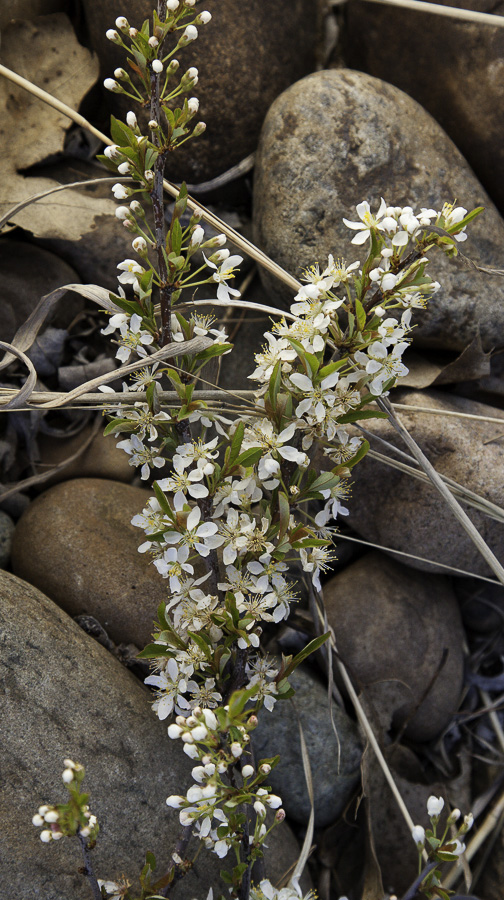

And here is the full-size version of prairie willow, Salix humilis var. humilis. It is taller, has larger fruits and leaves, and grows in dry sandy or rocky thickets.
Botany being botany, some writers differ with the Flora of North America and treat triste and susquehanae as full species. I have no trouble with this: from an New England perspective, they are rare plants that are pretty separate from their common relatives. But I see FNA’s point too: from a North American perspective, they are part of the variation pattern of two wide-ranging species and don’t stand out among the other variants. And, frankly, it doesn’t matter all that much: all it takes is a little extinction or disjunction to make a good variety into a good species.
Glenn and I needed two more species, fox grape, Vitis labrusca, and mockernut hickory, Carya tomentosa. Fox grape was easy. I had seen it by a little pond in southeast Vermont in the summer. We drove there, didn’t get stuck when I took the wrong turn, walked to the pond, and found it immediately. The leaves were gone, but all I needed was the twigs. They have matted, cobwebby hairs and tendrils at most of the nodes.
In contrast, Vitis riparia, our commonest grape, has smooth twigs and tendrils missing from every third node. Both have ribbed twigs. The ribbing is more pronounced on labrusca, but I wouldn’t trust this. Grapes are variable, and it pays to be careful.
The mockernut is a southern species and barely reaches Massachusetts. One of Glenn’s plant-hunting buddies had seen a few trees on the Holyoke Range and told us to look at a certain trail junction. We did, and found half a dozen smooth-barked hickories.
There were two sorts of leaves on the ground. The first sort were hairless, dotted with scales or glands, and had sharp teeth. These were pignut.
The second sort had tufted hairs and lower teeth.
Magnified, the veins have both simple and multi-branched hairs, something like a caterpillar with branches.
These were mockernut leaves. We could not tell from the bark which tree went with which leaves. But the leaves are definitive, at least when you don’t have too many other hickories around. And perhaps next summer, when the leaves are actually on the trees, we can sort the bark out.
The day with Glenn, which I thought remarkable, left me needing three species, all in northern Vermont. Two would take more climbing than I was up for, and so I called our Vermont crew, Brett Engstrom and Matt Peters. When you have friends like that, why fuss around? Here is Brett last summer, scouting cliffs, on the west side of Willoughby. Shortly afterwards the east side avalanched. We have often botanized the gully that avalanched. I don’t know that we will again.
And Matt with ferns and a moss, the same day.
Each of the three species we needed is currently known from one place in the state, though likely present at others. The first was Viburnum edule, squashberry. I had seen it years ago in subalpine thickets on Mt. Mansfield. Matt knew the site, and he and Brett found a few scrawny bushes and some fallen leaves.
Fallen or not, they were welcome. Dead leaves photograph well, and the patterns of color and decay are fascinating.
Squashberry is a fairly typical viburnum, rounded, coarsely toothed, weakly lobed. It is a northern, transcontinental species of moist thickets and river shores, commonest in the boreal and subarctic and rare in the northern forest. In the northeast we only see it at moderate or high elevations, and then only rarely.
Its closest native relative is Viburnum trilobum, highbush cranberry, a common, low-elevation species with stronger teeth, flaring side lobes, and coarse glands where the stalk meets the blade.

Near the viburnum was what we take, cautiously, to be Salix planifolia, tea-leaved willow. This is another transcontinental species, found from the boreal zone to the arctic and rare in the northern forest. Its best marks are the elliptical, smooth-edged leaves,
and glossy, hairless twigs.
It is close to Salix discolor, common pussy willow, and reported to hybridize with it. Hence our caution with vegetative identifications. Discolor, however, typically has more oblong leaves, and darker buds.
Currently we feel reasonably sure that the Smugger’s plants are Salix planifolia, which is what Vermont botanists have called them for a hundred years. But willow leaves and buds vary, and it would nice to see some fruits to be sure.
That made eight down with one to go. Nine was Salix amygdaloides, peach-leaved willow. It is a westerner, common on the prairies and in the foothills of the Rockies but very rare with us. Art Gilman found a tree that looks to be it near St. Johnsbury. He showed it to Brett and Brett to me. How it got here, we don’t know. The leaves resemble Salix lucida, shining willow, but are whitened on back and have no glands on the stalk.
Their first-order veins make a very fine mesh, with the smallest polygons only a few tenths of a millimeter across. Black willow has similar veins, but narrower leaves which are not whitened below.
The buds are ordinary looking, but with an odd feature: the edges of the bud scale overlap, like the lapels of a jacket, instead of being fused in a tube, like a sock. You can see the overlap line running down the left side of the bud. This is an unusual feature, restricted, in our flora, to the black and peach-leaved willows. Taken together with the leaf characters, which exclude black willow, it makes the identification pretty strong.
And that’s it. The photos are now all made and added to the maps and charts, and almost ready to go to print. I have a month in which to do some carpentry and photograph a few big patches of moss, before returning to woody plants for the winter. Happy fall to you all, thanks to Glenn, Brett, and Matt for the wonderful hunting, and to readers for reading. Let me know what you are seeing, or what you think, or what we have gotten wrong.
Jerry J., White Creek














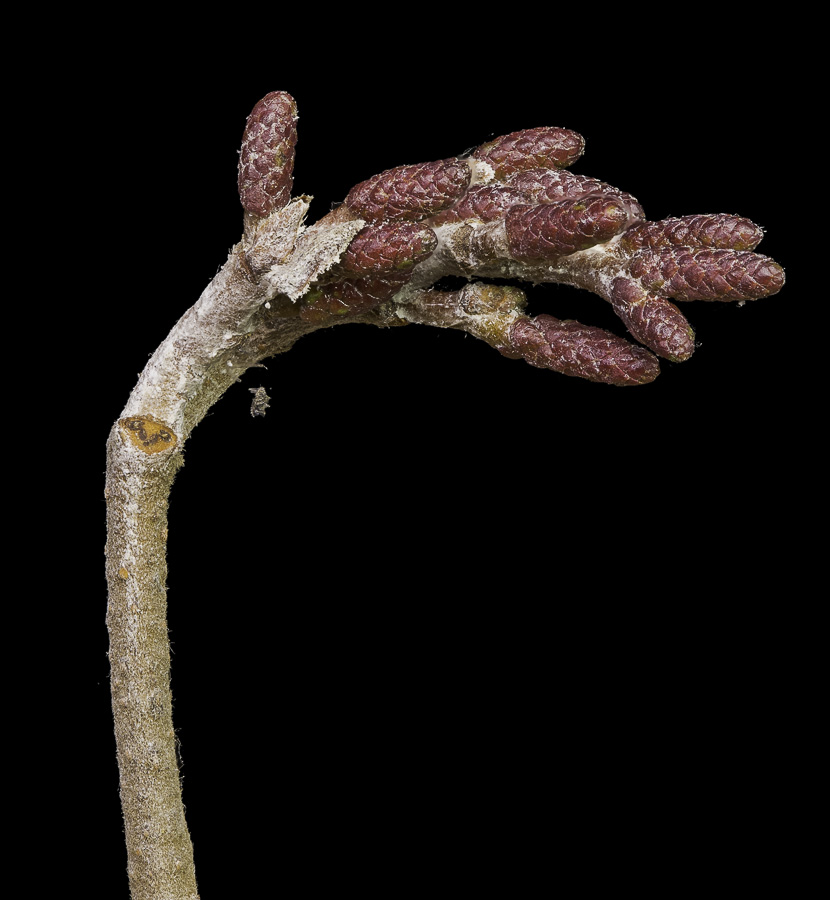

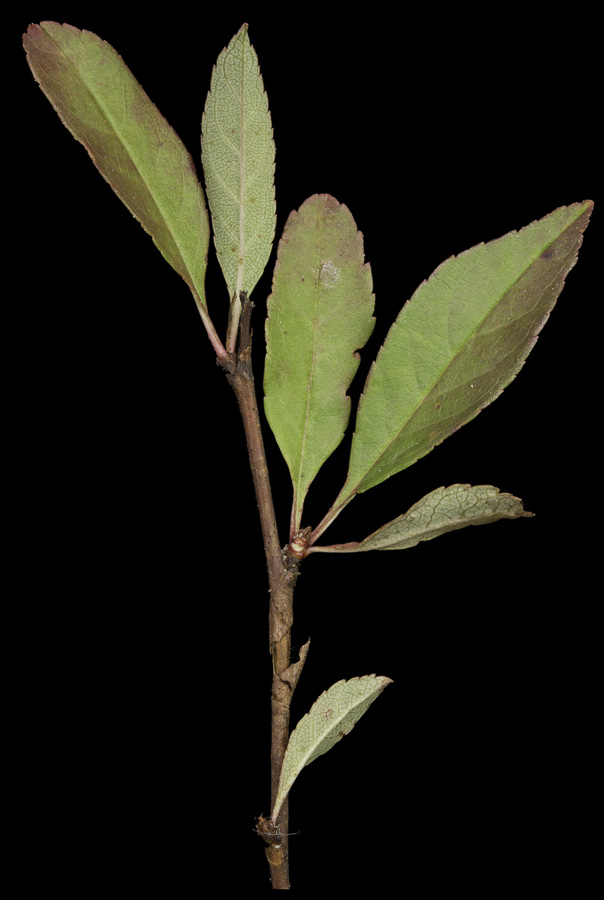

























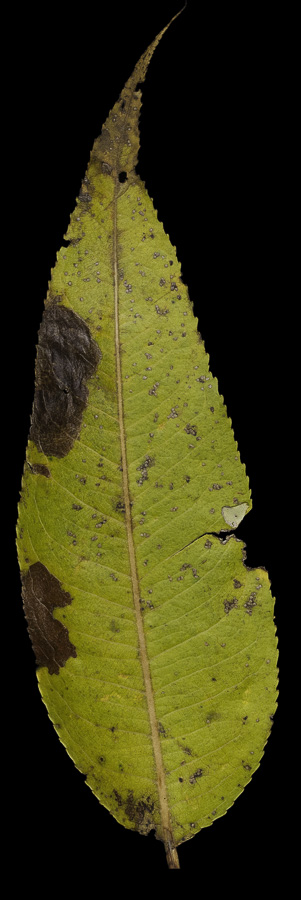
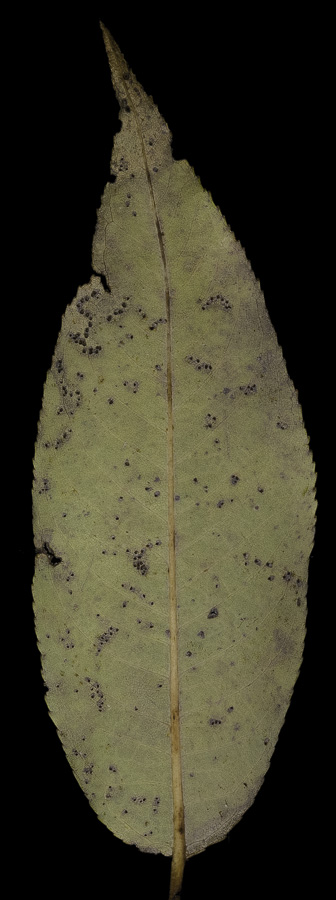


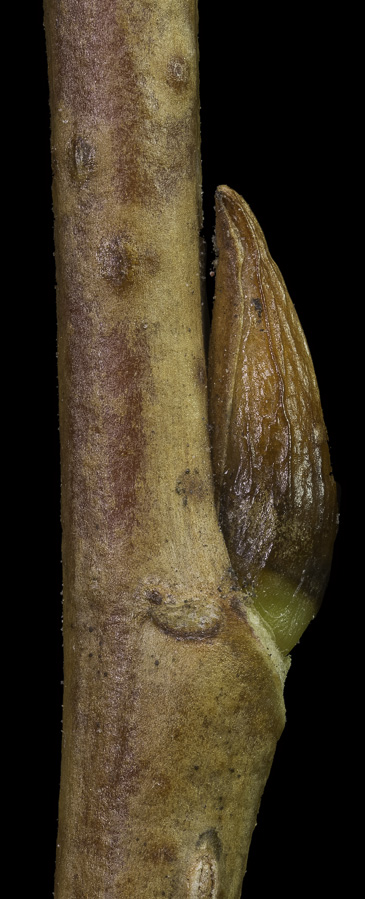
Hi Jerry
I found your blog to be very interesting. I may have several of the rare species in my Arboretum collection but am always suspicious of the ID given by the supplier. I will use your data to check the ID come spring. Thank you Ed Miller
Thank you Ed, and good to hear from you. I would love to see your arboretum in thew spring.
J.
Hi Jerry,
I would love to know where you found the Mockernuts on the Holyoke range. I am trying to learn these trees by the bark and have found some close by on Mt Warner in Hadley MA. It is not easy and so some of your clues will help when we are trying to figure them out. Let me know if you would like to see the trees at Mt Warner and I can bring you there. Contact me directly and maybe we can set up a trip.
I do know Karen Searcy well. Also Bob Leverett, who I love getting out in the woods with. I love what you are doing and it will be wonderful to see it all. Thanks for all the wonderful work.